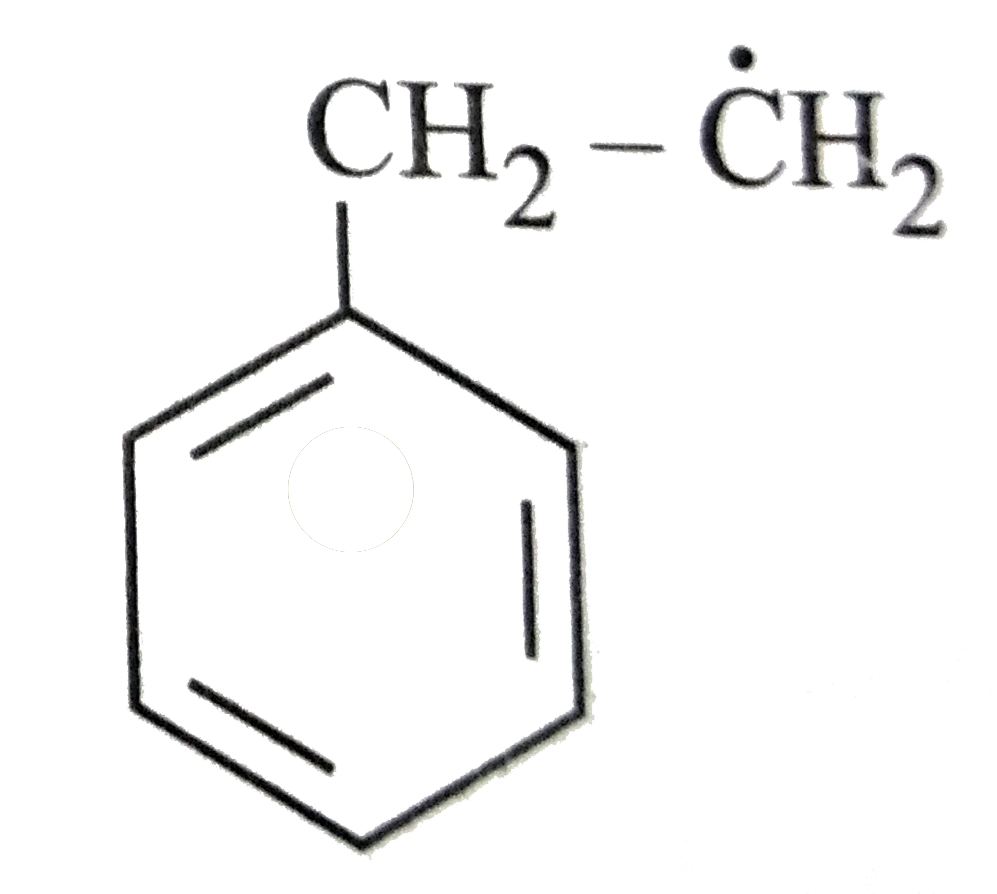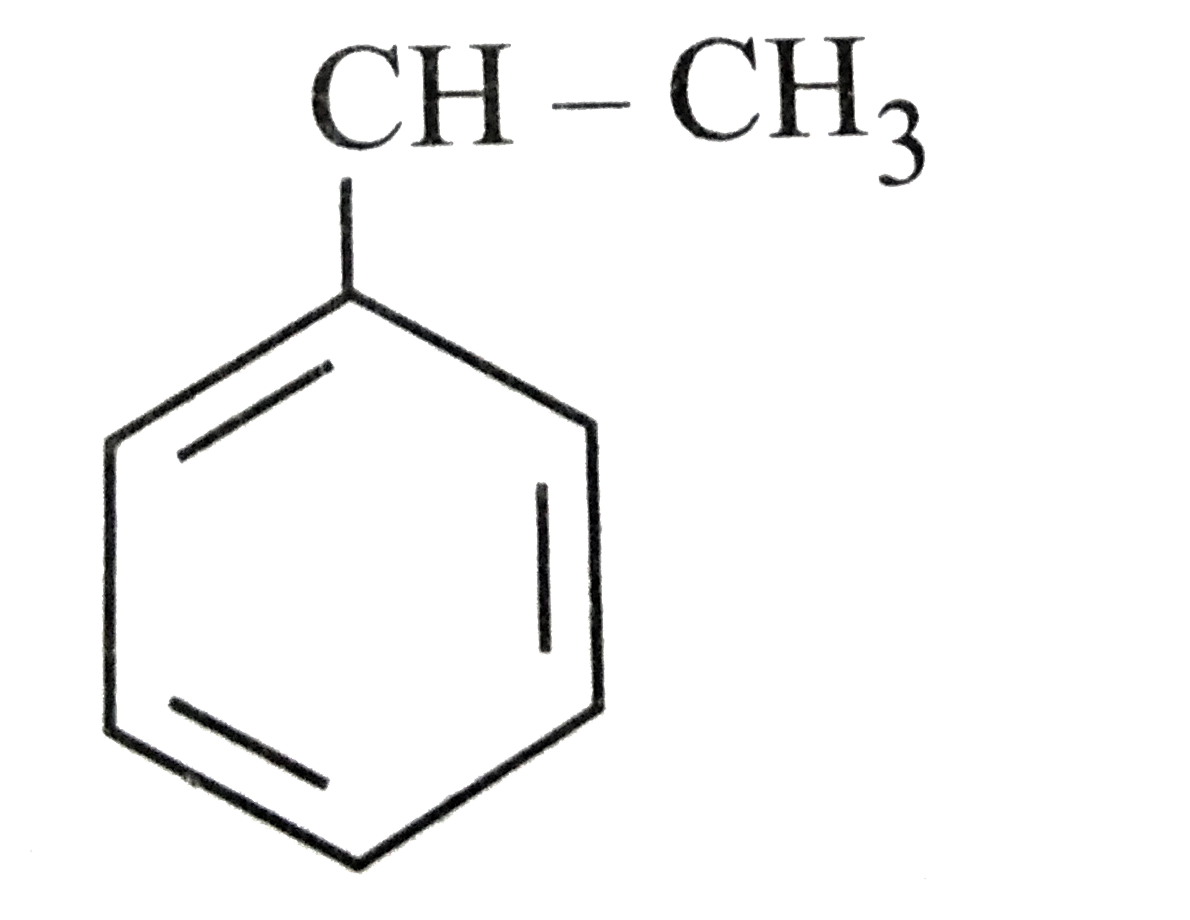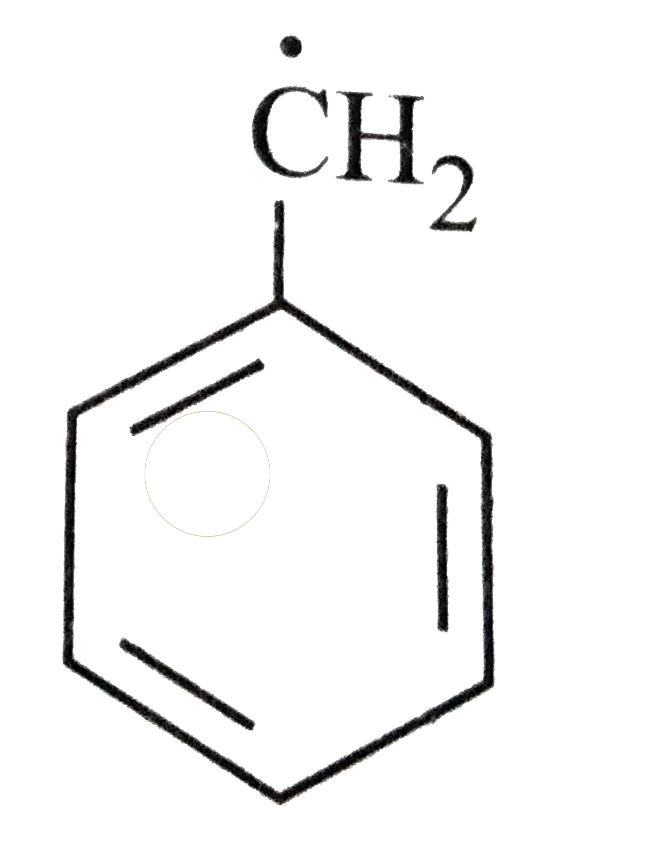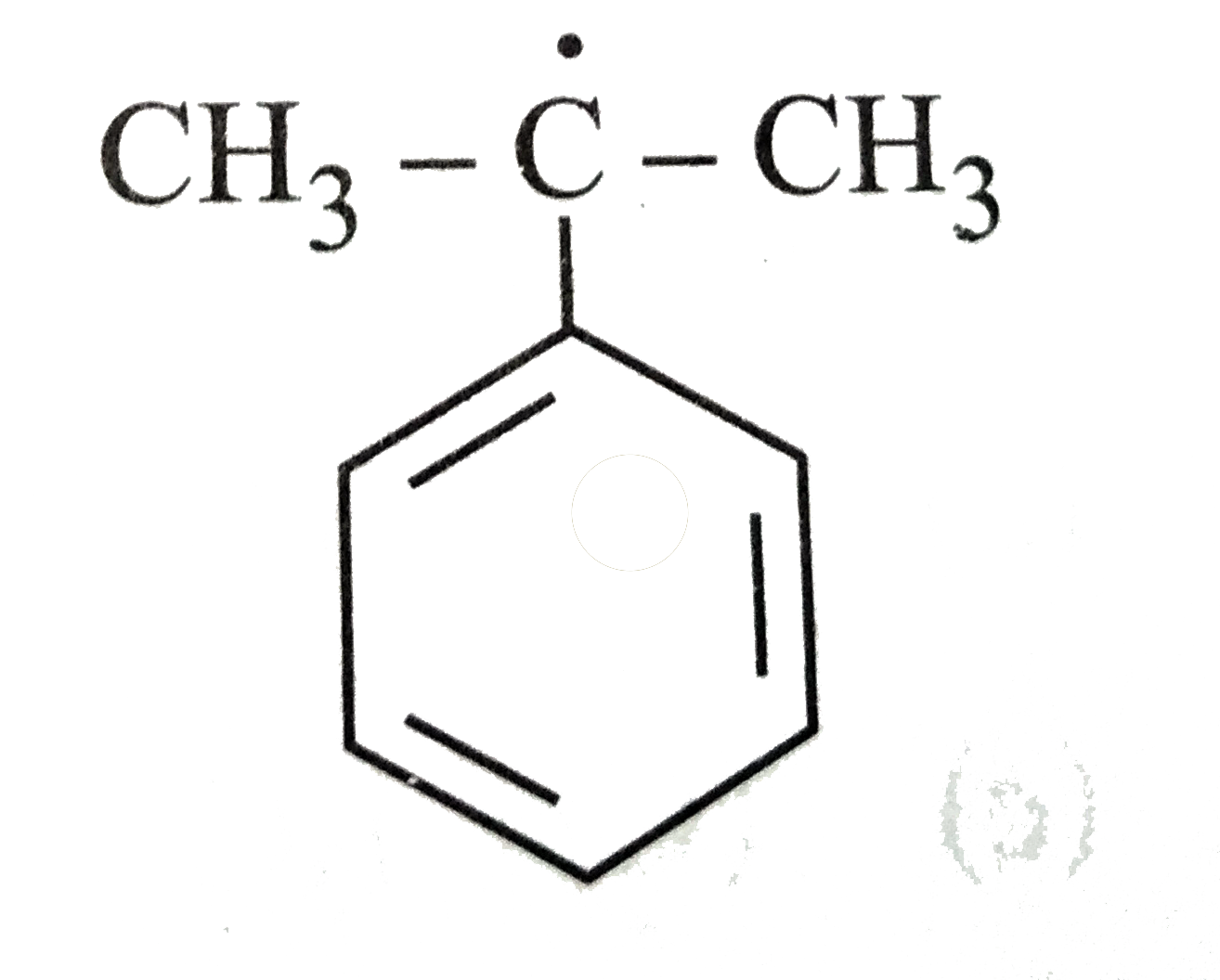An organic reaction occurs by using reagents called electrophiles and nucleophiles via the formation of some reactive intermediates called carbocations, carbanions, free radicals, carbenes, nitrenes, radical cations, and radical anions.
The most stable free radical is :
PhCH2.CH2
Me.CH2
Me2.CH
Ph.CHMe
The correct Answer is:D
To determine the most stable free radical among the given options, we need to analyze the stability factors that influence free radicals. The stability of free radicals is primarily affected by resonance and the inductive effect from electron-donating groups.
1. Identify the Free Radicals:
We need to analyze the free radicals presented in the options. Let's denote them as:
- Option A: Free radical on a phenyl group (Ph-CH2•)
- Option B: Free radical on a methyl group (CH3-CH•)
- Option C: Free radical on a tertiary carbon (Me2C•)
- Option D: Free radical on a phenyl group with a methyl (Ph-CH•-Me)
2. Analyze Resonance Effects:
- Option A (Ph-CH2•): The phenyl group can stabilize the radical through resonance. However, the radical is on a CH2, which does not allow for effective resonance stabilization.
- Option B (CH3-CH•): This is a primary radical and does not have resonance stabilization. It has minimal stability.
- Option C (Me2C•): This is a tertiary radical. Tertiary radicals are more stable due to hyperconjugation and inductive effects from the two methyl groups, but it lacks resonance.
- Option D (Ph-CH•-Me): The radical is on a carbon adjacent to a phenyl group, which allows for resonance stabilization. The methyl group also provides a +I effect, enhancing stability.
3. Evaluate Inductive Effects:
- The methyl group in Option D provides a +I effect, which helps in stabilizing the radical. The phenyl group can delocalize the radical through resonance, making it more stable than the others.
4. Conclusion:
After evaluating all options, Option D (Ph-CH•-Me) is the most stable free radical due to the combination of resonance stabilization from the phenyl group and the +I effect from the methyl group.
Final Answer:
The most stable free radical is Option D (Ph-CH•-Me).
We need to analyze the free radicals presented in the options. Let's denote them as:
- Option A: Free radical on a phenyl group (Ph-CH2•)
- Option B: Free radical on a methyl group (CH3-CH•)
- Option C: Free radical on a tertiary carbon (Me2C•)
- Option D: Free radical on a phenyl group with a methyl (Ph-CH•-Me)
- Option A (Ph-CH2•): The phenyl group can stabilize the radical through resonance. However, the radical is on a CH2, which does not allow for effective resonance stabilization.
- Option B (CH3-CH•): This is a primary radical and does not have resonance stabilization. It has minimal stability.
- Option C (Me2C•): This is a tertiary radical. Tertiary radicals are more stable due to hyperconjugation and inductive effects from the two methyl groups, but it lacks resonance.
- Option D (Ph-CH•-Me): The radical is on a carbon adjacent to a phenyl group, which allows for resonance stabilization. The methyl group also provides a +I effect, enhancing stability.
- The methyl group in Option D provides a +I effect, which helps in stabilizing the radical. The phenyl group can delocalize the radical through resonance, making it more stable than the others.
After evaluating all options, Option D (Ph-CH•-Me) is the most stable free radical due to the combination of resonance stabilization from the phenyl group and the +I effect from the methyl group.
The most stable free radical is Option D (Ph-CH•-Me).
Topper's Solved these Questions
- GENERAL ORGANIC CHEMISTRYBOOK - CENGAGE CHEMISTRY ENGLISHCHAPTER - GENERAL ORGANIC CHEMISTRYEXERCISE - Multiple Correct
22 Videos
- GENERAL ORGANIC CHEMISTRYBOOK - CENGAGE CHEMISTRY ENGLISHCHAPTER - GENERAL ORGANIC CHEMISTRYEXERCISE - Single Correct
23 Videos
- GENERAL ORGANIC CHEMISTRYBOOK - CENGAGE CHEMISTRY ENGLISHCHAPTER - GENERAL ORGANIC CHEMISTRYEXERCISE - Concept
17 Videos
- CLASSIFICATION AND NOMENCLATURE OF ORGANIC COMPOUNDSBOOK - CENGAGE CHEMISTRY ENGLISHCHAPTER - CLASSIFICATION AND NOMENCLATURE OF ORGANIC COMPOUNDSEXERCISE - Analytical and Descriptive Type
3 Videos
- HYDROGEN, WATER AND HYDROGEN PEROXIDEBOOK - CENGAGE CHEMISTRY ENGLISHCHAPTER - HYDROGEN, WATER AND HYDROGEN PEROXIDEEXERCISE - Subjective Archive (Subjective)
3 Videos
Similar Questions
An organic reaction occurs by using reagents called electrophiles and nucleophiles via the formation of some reactive intermediates called carbocations, carbanions, free radicals, carbenes, nitrenes, radical cations, and radical anions.
The most stable carbanion is :
View SolutionAn organic reaction occurs by using reagents called electrophiles and nucleophiles via the formation of some reactive intermediates called carbocations, carbanions, free radicals, carbenes, nitrenes, radical cations, and radical anions.
The most stable carbocation is :
View Solution
Knowledge Check
The most stable free radical among the following is
A B
B C
C D
D
An organic reaction occurs by using reagents called electrophiles and nucleophiles via the formation of some reactive intermediates called carbocations, carbanions, free radicals, carbenes, nitrenes, radical cations, and radical anions.
The least stable carbocation is :
View SolutionAn organic reaction occurs by using reagents called electrophiles and nucleophiles via the formation of some reactive intermediates called carbocations, carbanions, free radicals, carbenes, nitrenes, radical cations, and radical anions.
Which of the following contains electrophiles only ?
View SolutionAn organic reaction occurs by using reagents called electrophiles and nucleophiles via the formation of some reactive intermediates called carbocations, carbanions, free radicals, carbenes, nitrenes, radical cations, and radical anions.
Which of the following contains nucleophiles only ?
View SolutionThe most Carbocations, carbanions, free radicals and radical cation are reactive carbon intermediates. Their hybrid orbitals respectively are
View SolutionThe free radical which is most stable is
View SolutionFree radical polymerisation requires a free radical initior.The most commonly used free radical initiator is:
View SolutionWhy do free radicals and carbenes act as electrophiles ?
View Solution
